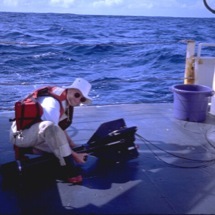
Radiometric Observations:We measure surface and profile downwelling irradiance (Es and Ed) and upwelling nadir radiance (Lu) using Biospherical (1992-1999) and Satlantic (1999-present) multispectral radiometers (325-665 nm). From these measurements we derive the diffuse attenuation coefficient spectrum (Kd), remote sensing reflectance (Rrs), and related parameters.
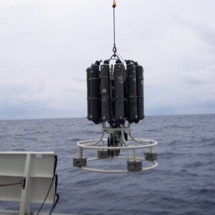
Light-absorbing Components: Using bottle samples, we measure absorption spectra (300-800nm) of chromophoric dissolved organic matter and suspended particles. We estimate phytoplankton and particulate detritus absorption spectra by using solvent-extraction of phytoplankton pigments. We also measure profiles of chlorophyll a (fluorometric technique)
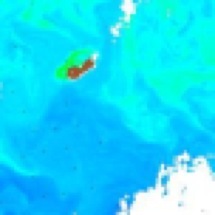
Algorithm Development:We continue to work on improving the GSM algorithm for retrieving chlorophyll, CDOM, and particulate backscatter spectra from ocean color data. We contribute our time-series observations to NASA databases.
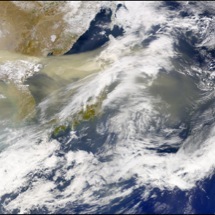
Atmospheric Dust:We are interested in the effect of small amounts of Saharan dust on the remote sensing signal near Bermuda. To this end we participated in a research expedition in the equatorial Atlantic as part of the US-AMMA program.
BBOP Projects
Many of NASA's Earth Science research questions address issues related to the biological and biogeochemical responses to climate forcing. Our research relates primarily to two specific topics: 1) How are global ecosystems changing? and 2) How do ecosystems respond to and affect global environmental change and the carbon cycle?
Time-series observations are required tools for answering these questions. Our satellite and in situ time-series measurements of optical, biological and biogeochemical properties in the Sargasso Sea have reached the point where responses to medium-term climate oscillators such as ENSO and NAO can be assessed.
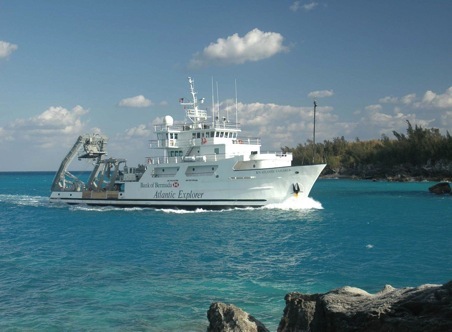
We hope to continue our decade-plus series of high-quality in situ optical observations made at the Bermuda Atlantic Time-series site southeast of Bermuda in the North Atlantic subtropical gyre. These observations, which include in-water light fluxes, water leaving radiances, and abundances of chlorophyll, CDOM, and particulate (phytoplankton) absorption spectra, provide information on community structure and biogeochemical cycling in the North Atlantic subtropical gyre, particularly when combined with concurrent measurements made by the BATS program which include primary production, nutrients, phytoplankton pigments, and particulate flux.
Our prior results have shown fluctuations in these properties that imply non-local influences (such as the formation of subtropical mode water several hundred miles north of the site), and possible teleconnections to climate oscillators such as the NAO.